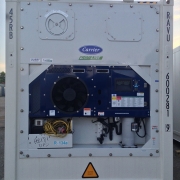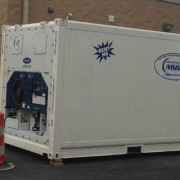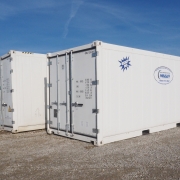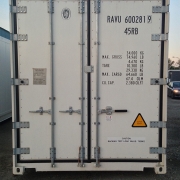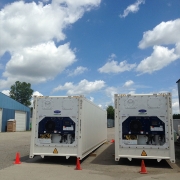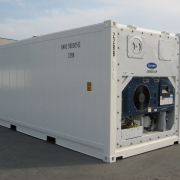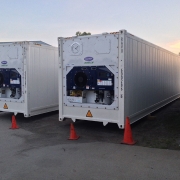Reefer Containers: How They Work
A reefer container is a common term used to refer to a refrigerated container. Reefer containers are used around the globe in various supply chains. They are incredibly effective for cold and frozen storage, both in transportation and for short and long-term storage. The demand for reefer containers has surged in the past few years, and their technology continues to improve on energy efficiency, quietness, and maintenance overhead.
How do they work? Read along to find out more.
Reefer Containers: An Overview
Reefer containers are temperature-controlled containers for transportation and storage. Like non-cooling shipping containers, they are often made for transportation in their construction. They are often mass-shipped on cargo ships, so their size and exterior construction is made for easy stacking and transport.
Reefers keep goods cooled by distributing cold air within each container. They do not actually reduce the temperature of goods- they maintain temperatures of already cooled or frozen goods. They also need a power source to maintain cooling and freezing. Generators are the solution for this. They This is typically achieved through a generator that’s attached to a reefer. Generators may run on gas, electric, or a combination of both. Moon Mini’s Refrigeration’s units run entirely on electricity, providing a lower-cost cooling solution that also avoids the need for constant refueling.
The Science of Cooling in Reefer Containers
Depending on the desired temperature for goods in a container, the way you stack boxes varies. For containers with chilled goods, airflow must constantly circulate around and between goods. This is because the goods themselves, in addition to the exterior of the container, may be a heat source. For instance, fruits and vegetables undergo respiration processes and produce carbon dioxide and gases that can create heat as they are being shipped. Goods like these that may produce heat and need chilling should be stacked with overlaps that create air pockets between boxes. This allows airflow around the outside of boxes during shipping and keeps goods cooled.
In cases of frozen cargo, the approach is different. Frozen goods do not release heat, and reducing surface area exposure to heat sources is critical. This means stacking boxes together with no gaps. There just needs to be airflow between the outside of exposed boxes and the container wall, to cool any warm air from the exterior.
Other Important Functions
Reefer containers have numerous other features that help keep cargo cooled. For one, they often have fresh air ventilation that helps replace overly-humid air from containers (this is common when shipping fruits and vegetables). Additionally, there are tools that help measure air temperature and humidity. There are also fans to help circulate air properly. Plus, like all shipping containers, reefer containers have secure doors that allow for safe shipping and storage.
Moon Mini Refrigeration offers flexible rental periods, multiple container sizes, great prices, and top-notch customer service. To rent a refrigerated container today, give us a call at 502-772-2821.


